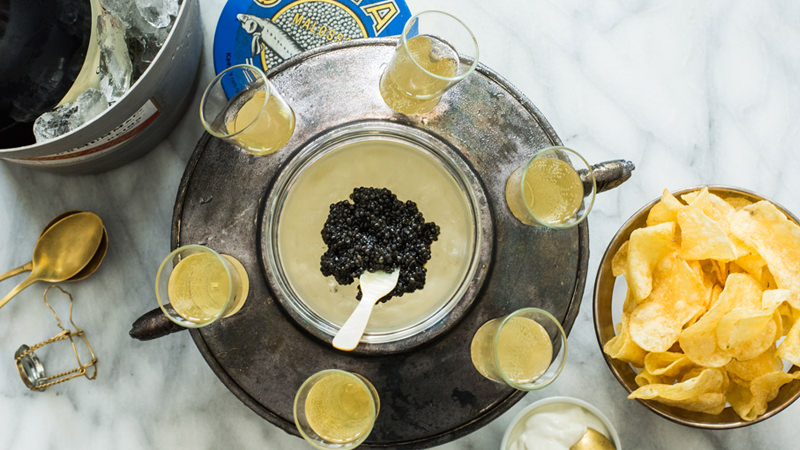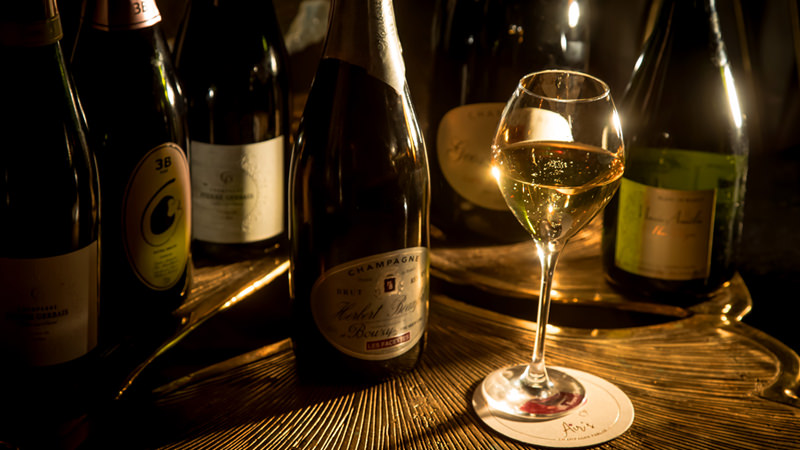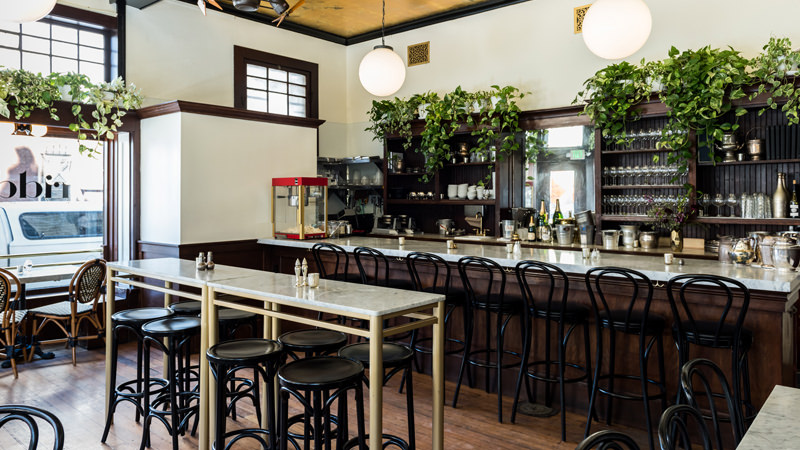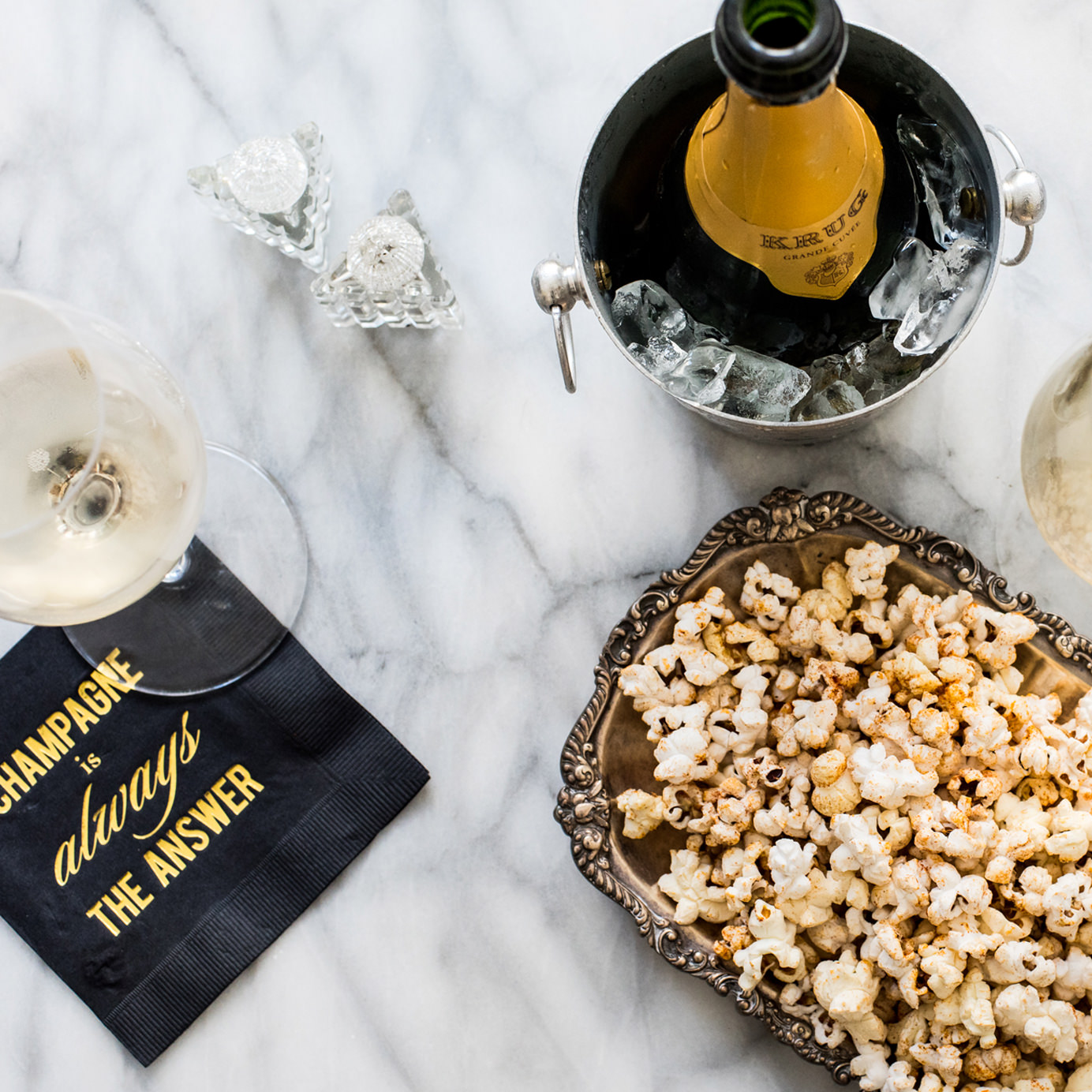In the past year, a slew of Champagne bars have popped up across the country. The Riddler opened in San Francisco in January, and Effervescence debuted in New Orleans in March. In June, New Yorkers welcomed Air’s Champagne Parlor, while St. Louis got Extra Brut in August. These bubbly hotspots — all of them, coincidentally, owned by women — offer guests a slew of Champagne and sparkling wine selections by the glass and bottle, accompanied by cool-kid vibes, low-brow snacks, and as-cheap-as-possible prices. Experts and novices are buzzing, and media coverage of this new wine bar category reaches from small local publications all the way to national lifestyle magazines.
But when it comes down it, Champagne bars hedge their bets on a category of wine that exists at a steep price point for the average consumer. Are Champagne bars sustainable in the long term, and what’s the key to doing them right?
From Luxury to Approachability
Champagne bars not new to the United States. New York’s iconic Champagne Bar at the Plaza Hotel first launched in 1907 and remains a high-end institution. There was a surge of Champagne bar openings in major U.S. markets in the 1990s and early 2000s, like the Bubble Lounge in New York and San Francisco, and Flûte Bar & Lounge in midtown Manhattan. But with the exception of Pops for Champagne, a 35-year-old operation based in Chicago, these establishments felt more like velvet-rope lounges than inclusive bars.
“These were almost a response to bottle-service clubs, for people who wanted to step it up with very, very expensive bottles,” says Jen Pelka, owner of The Riddler in San Francisco. Whereas these old-school Champagne lounges openly luxuriated in the high-end reputation of Champagne, featuring large houses like Veuve Clicquot, Pelka and her modern Champagne bar peers attempt to increase accessibility of the beverage.
“Champagne has really moved from being the beverage that you consume at weddings or New Year’s Eve to a much more common, frequent category,” Pelka says.
Over the past five to 10 years, the U.S. wine market has seen an influx of new, interesting Champagnes from small grower-producers that didn’t export to this country or didn’t bottle their own wine. Sommeliers and wine professionals revel in the wealth and diversity of these Champagnes, proclaiming the beverage’s approachability and food-friendliness. Now, Champagne is available at pizza joints and Korean restaurants, not just on leather-bound wine lists at Michelin-starred restaurants.
Ariel Arce, owner of Air’s Champagne Parlor in NYC, has been trying to democratize Champagne for years. After working at both The Office and Pops for Champagne in Chicago, she attempted to bring Champagne to the average New Yorker, enacting a high-brow/low-brow concept at Birds and Bubbles, which paired fried chicken with Champagne. She also created a Champagne-centric dive bar, Riddling Widow. Both establishments have since closed.
“How do we build restaurant models that allow everybody to enjoy this product and take it down off of a pedestal?” Arce says. “Champagne has been marketed in a way that’s so negative to what it is, which is that it’s a celebratory, expensive beverage, but now the landscape of Champagne is changing completely.”
Many bubble-loving wine professionals see neighborhood Champagne bars as the next step in this progression. The new crop of Champagne bars joins like-minded spots like Ambonnay in Portland, Oregon and Ça Va in Kansas City, Missouri, and shares the same core mission: to take the formality out of Champagne.
At Air’s, T-shirt-clad servers pour Champagne into standard wine glasses rather than flutes, and accompany them with grilled cheese sandwiches. The Riddler offers gratis popcorn topped with an array of salts, or a baller “bump and a shot” combo featuring shot glasses of Champagne, a spoonful of caviar, and Lay’s potato chips. Cool, chill, and cheap, with both high- and low-brow accents throughout the establishment — this is what defines the Champagne bar today.

Doing the Math
It’s indisputable that Champagne has a certain entry-level price. Any beverage director would be hard-pressed to find a good grower Champagne at a wholesale cost of less than $25 — even $30 to $40 is a steal. At the same time, the trend toward accessible, new-wave Champagne lists is to offer high-quality bottles at lowest-of-the-low prices.
Many restaurants do this by offering higher markups on so-called “house wines” in order to compensate for lower markups on Champagne. But because Champagne bars survive primarily on sales of sparkling wine, they don’t have that luxury. How, then, can Champagne bars survive without charging high prices for their Champagnes? The math doesn’t seem to add up.
“A huge part of what we do here is 50 bottles under $50, which features half-bottles of Champagne and full bottles of sparkling wines around the world,” Arce says.
Both Air’s and The Riddler feature non-Champagne sparkling wines both by-the-bottle and by-the-glass, which can often be offered at lower prices than true Champagne. Some might argue that the term “Champagne bar” is therefore a misnomer, particularly because sommeliers are constantly trying to break the assumption that all sparkling wine is Champagne. If the average guest doesn’t have $65 to spend on the cheapest bottle of Champagne and instead opts for Cava, are these Champagne bars really educating the guest about Champagne?
Instead of shelling out the dough for an entire bottle, Champagne bars also offer a variety of by-the-glass options, which have less sticker shock than bottles. Price becomes an issue here as well; even the best deals for good Champagnes can seem expensive to the average guest.
“In the beginning the feedback was that everything was too expensive,” Pelka says. “They would say, ‘$25 for a glass of Champagne? Are you guys crazy?’” Pelka, who offers five-ounce glass pours for every Champagne and sparkling wine, acknowledges that prices are high because of the product itself. In response, she reorganized the by-the-glass list, moving vintage Champagne offerings below less expensive, non-vintage Champagnes and sparkling wines.

Arce tries a different tactic at Air’s, offering smaller by-the-glass pour sizes in order to keep prices lower. All non-vintage Champagnes are sold for less than $20.
“When do you ever see a glass of Champagne for under $20?” Arce asks. “I would rather buy something with more value and drink a little bit less of it.” At the same time, she understands that Champagne prices are never going to be as cheap as Prosecco, for instance. “Yes, you are going to pay for it, but we believe it’s worth it,” she says. Arce notes that she has not received negative feedback about pour sizes, but Airs’ Yelp page has multiple reviews complaining about small pours.
Adding Value
In the end, Champagne is never going to be a cheap beverage. It can certainly have value, though, and Champagne bars need to find ways to add value to their selections to make the concept work. The most significant sources of added value are service and hospitality.
“It’s all about manning your team with as much information as possible,” Pelka says. “It’s about making sure that they have interesting stories about producers and making sure that they know their information. We just really try to read the guests and develop a sense of trust over time.”
Arce agrees. “It’s important to find a way for people to trust you, and they will only trust you if you honestly know what you’re talking about,” she says. That’s the role of the sommelier in any restaurant. All guests understand that they will pay more for any bottle of wine at a restaurant rather than at a retail shop. The experience of dining in that restaurant, however, makes the increased price worthwhile.
Unfortunately, in order to afford to offer Champagne with low markups, a Champagne bar might be tempted to cut back on service — something that, in the long run, could hurt the operation.
“You’re probably not going to get the kind of service that you could get at a restaurant that can afford to have a lot more labor,” Arce admits. “We’re not always going to be able to give the service that we want to give because unfortunately, to match the level of the product that we’re serving and the environment that we’re in, we run with a really small crew of people.”
While there may be room for more single-category wine bars in the future — Pelka would love to see a Riesling bar — the Champagne bar is an ambitious, admirable one to tackle. The bars that will last will be the ones that manage to find that needle in a haystack, the tricky combination of low prices, a welcoming, unpretentious environment, and proficient service. In today’s competitive environment, anything less than perfection simply isn’t sustainable.

